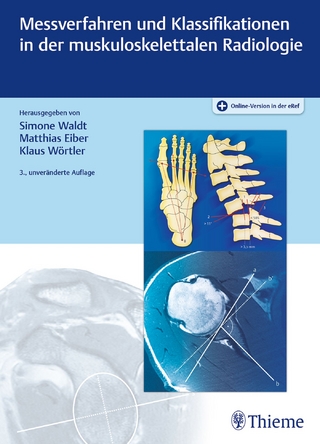
Interventional Radiation Therapy
Springer Berlin (Verlag)
978-3-642-84165-1 (ISBN)
In the last decade brachytherapy experienced a dramatic up-
swing. The introduction of new radioisotopes with favorablenuclear physical properties, computer-assisted dosimetry,
and the advent of modified afterloading techniques set off
this revolutionary development. The main topics discussed in
this book are brain tumors and tumors of the head and neck,
choroidal melanoma, breast cancer, carcinoma of the anal ca-
nal, carcinoma of the prostate, and gynecological malignan-
cies.
Prof. Dr. med. Rolf Sauer absolvierte eine Ausbildung in der Medizinischen Radiologie am Universitätsspital Basel bei H. Hartweg und R. Hünig. Seit 1977 Ordinarius für Strahlentherapie in Erlangen mit den Arbeits- und Forschungsschwerpunkten: organ- und funktionserhaltende Therapie bei Mammakarzinom, Harnblasenkarzinom und Analkarzinom; Radiochemotherapie von kolorektalen Karzinomen.1978 Gründung des Erlanger Tumorzentrums. 1979-1985 war er Vorsitzender der Deutschen Radioonkologen und von 1990-2000 Vorsitzender der Deutsch-Japanischen Röntgenvereinigung. Seit 1996 ist Ärztlicher Direktor des Erlanger Universitätsklinikums. Seit 2000 Vorstandsmitglied der Deutschen Gesellschaft für Senologie. Ehrenmitglied u.a. der Radiological Society of North America, Chicago.
1 Basic Principles.- 1.1 Principles of Combining External Beam and Brachytherapy.- 1.2 Fundamentals in Radiobiology.- 1.3 Fundamentals in Physics.- 1.4 Brachytherapy Techniques.- 1.5 High and Low Dose Rate Remote Afterloading: A Critical Comparison.- 2 Brain Tumors.- 2.1 Basic Principles of Brachycurietherapy of Brain Tumors.- 2.2 Imaging-Stereotaxic Implantation of Radionuclides in Intracranial Tumors (Curietherapy and Brachycurietherapy).- 2.3 Experimental Dose Effects After Permanent and Temporary Interstitial Irradiation of the Brain.- 2.4 Fractionated Afterloading Therapy in the Treatment of Malignant, Inoperable Brain Tumors.- 2.5 External Stereotactic Focal Irradiation.- 2.6 External Stereotactic Focal Irradiation of Arteriovenous Malformations by a Routinely Used Linear Accelerator.- 3 Choroidal Melanoma.- 3.1 Results After Brachytherapy Using 106Ru/106Rh Plaques for Choroidal Melanomas.- 3.2 Choroidal Melanoma: Role of Brachytherapy in Management.- 3.3 Experience with High-Dose ?-Irradiation (106Ru/106Rh) of Choroidal Melanomas.- 4 Head and Neck Tumors.- 4.1 Classification of Oral Cavity and Oropharynx Carcinomas.- 4.2 Interstitial Radiotherapy of Oral Cavity and Oropharynx Carcinomas (Paris Technique).- 4.3 Interstitial Brachytherapy in Head and Neck Tumors.- 4.4 Manual Afterloading in Brachytherapy (Endocurietherapy with 192Ir Wires and Needles).- 4.5 Temporary and Permanent Brachytherapy in Advanced Head and Neck Cancer - The Erlangen Experience.- 4.6 198Au Implantation of Carcinoma of the Mobile Tongue.- 5 Breast Cancer.- 5.1 Brachycurietherapy in Breast Cancer.- 5.2 Interstitial Boost Irradiation: Indications, Technique, Complications.- 5.3 Interstitial Boost Irradiation Technique and Dosage.- 5.4 Iridium-192 Afterloading for Boosting the Tumor Bed.- 6Anal Canal Cancer.- 6.1 Carcinomas of the Anal Canal: An Introduction.- 6.2 Role of Combined Radiochemotherapy: The Lyon Experience.- 6.3 Combination Therapy of Anal Canal Cancer: A Report on External Irradiation With or Without Chemotherapy Followed by Interstitial Iridium 192.- 6.4 Radiochemotherapy of Anal Canal Cancer With or Without Interstitial Implants.- 6.5 Conservative Treatment of Anal Carcinoma: The Surgeon's View.- 7 Prostatic Cancer.- 7.1 Interstitial Irradiation in Prostatic Cancer: Report of 10-Year Results.- 7.2 Interstitial Radiotherapy: The Freiburg Experience.- 7.3 Cancer of the Prostate: Brachytherapy Techniques.- 7.4 Percutaneous Iodine-125 Implantation Guided by Ultrasound.- 7.5 Transperineal 125I Implantation Guided by Ultrasound: Preliminary Results of 150 Cases.- 8 Gynecological Malignancies.- 8.1 Interventional Radiation Therapy Techniques in Gynecology.- 8.2 Technical Aspects of Bladder Dosimetry in Intracavitary Irradiation of Carcinoma of the Cervix.- 8.3 Intracavitary High Dose Rate Afterloading Therapy with Iridium 192: Basic Physical Measurements, Dosimetry, and Localization.- 8.4 Present Status and Perspectives of High Dose Rate Afterloading in Gynecologic Malignancies.- 8.5 Five-to Seven-Year Results in High Dose Rate Radiation of Cancer of the Cervix.- 8.6 Prospective Clinical Trial Concerning High Dose Rate Afterloading Therapy in Cancer of the Cervix and Endometrium.- 8.7 Comparison Between High Dose Rate Afterloading and Conventional Radium Therapy.- 8.8 High Dose Rate Afterloading Compared with Conventional Brachytherapy.- 8.9 Low and High Dose Rate Afterloading in Gynecological Malignancies.- 9 Interstitial Hyperthermia.- 9.1 Techniques and Clinical Experience of Interstitial Thermoradiotherapy.- 9.2 Interstitial andIntraoperative Hyperthermia.- 9.3 Interstitial Thermoradiotherapy in the Treatment of Malignant Tumors.- 9.4 Experiences With Interstitial Hyperthermia as a Sole Treatment Modality or Combined with Radiotherapy.- List of Contributors.
| Erscheint lt. Verlag | 9.1.2012 |
|---|---|
| Reihe/Serie | Medical Radiology | Radiation Oncology |
| Vorwort | L.W. Brady, H.-P. Heilmann |
| Zusatzinfo | XII, 398 p. |
| Verlagsort | Berlin |
| Sprache | englisch |
| Maße | 193 x 270 mm |
| Gewicht | 896 g |
| Themenwelt | Medizin / Pharmazie ► Medizinische Fachgebiete ► Chirurgie |
| Medizin / Pharmazie ► Medizinische Fachgebiete ► Onkologie | |
| Medizinische Fachgebiete ► Radiologie / Bildgebende Verfahren ► Radiologie | |
| Schlagworte | Brachytherapie • Brachytherapy • brain • Brain Tumors • Breast Cancer • Cancer • carcinoma • classification • Endometrium • melanoma • Onkologische Chirurgie • Radiation • radiation therapy • Radiology • radiotherapy • Surgery • Tumor |
| ISBN-10 | 3-642-84165-1 / 3642841651 |
| ISBN-13 | 978-3-642-84165-1 / 9783642841651 |
| Zustand | Neuware |
| Informationen gemäß Produktsicherheitsverordnung (GPSR) | |
| Haben Sie eine Frage zum Produkt? |
aus dem Bereich


